
On this day, September 3, 1857, John McLoughlin (b.1784), Hudson's Bay Co. pioneer at Fort Vancouver and in Oregon Country, died in Oregon City. In the late 1840s his general store in Oregon City was famous as the last stop on the Oregon Trail.
 Post an Event
Post an Event
| Benton County Republicans’ Private Fundraising Event, “Bent-on Boots and Bling” with Trey Taylor |
| Friday, September 5, 2025 at 5:00 pm |
| Featuring Trey Taylor
Music Private Event
Friday, September 5, 2025 5:00-5:30 pm VIP Reception
5:30-8:00 pm Heavy Appetizers,
Auction, Concert
Red: $750 VIP Reception
Front Row Table Sponsor
White: $500 Table Sponsor
Blue: $50 per person
Limited Seating. Get Yours Now!!!
Support Local
Dress up: Bling, Cowboy, Patriotic Benton County Republican
FUNDRAISER
www.BentonGOP.org
Get your tickets today at:
https://www.bentongop.org/event-details/benton-county-republicans-fundraiser/form
About Trey:
Trey is the youngest African American Man in Country Music History. The Denver Post wrote
"It's impossible to miss his enthusiasm. With a fondness for cowboy boots, gaudy colors and dazzling jewelry, Trey Taylor could stand toe to toe with any of the Pop, Country or even Rap
contemporaries of his generation.“ |
| Trysting Tree Golf Club, 34028 NE Electric Rd., Corvallis |
In collaboration with DIRECTV and Portland-based ad agency
Governor Kate Brown announced today that, in collaboration with DIRECTV and Portland-based ad agency Wieden+Kennedy, Oregon's public awareness campaign to inform the public about the urgent importance of wearing face coverings has launched nationwide. Wieden+Kennedy provided their creative services at no cost to the state, and DIRECTV is covering the costs of airing the
ad campaign.
“We face this pandemic as one country. The only way we are going to see this crisis through is by working together. By wearing a face covering, we protect everyone around us. I would like to thank the team at Wieden+Kennedy for donating their creative talent, and DIRECTV for their generosity in helping deliver this message nationwide.
“As the colder months return and we all spend more time indoors, we can keep our friends and loved ones healthy and safe by following the advice of doctors: wearing a face covering in public, physically distancing, washing our hands frequently, and avoiding large gatherings.
“Wearing a face covering is a simple, common sense way to protect yourself and others. It’s an easy way to help reduce the spread of COVID-19 and save lives. Across the country, no matter our differences, we all want to return to the way life was before COVID-19. We all want to reopen schools, businesses, communities, and economies. How do we get there? It starts with each and every one of us wearing a mask in public.â€
"We are committed to helping our community stay safe during these challenging times,†said George Granger, Oregon President of AT&T. We are proud to help the State of Oregon deliver their important message. It's imperative that we all do our part.â€
The ad campaign—which originally began airing in Oregon in July on social media, online video platforms, and outdoor media—was created to speak directly to people about how our individual decisions can impact the COVID-19 health crisis. It provides clarity and conviction around what wearing a face covering means—and how we all have a role to play in reducing the spread of COVID-19.
Text of
A Mask is Just a Mask, which is used within the video:
A mask should not be
A sign of weakness
A political statement
Another way to divide us
A mask is a protective device
A barrier to protect you
And those around you from a virus
A mask is just a mask
And masks save lives
This year, don't accidentally kill someone.
Wear a mask and socially distance.
--Ben Fisher| Post Date: 2020-10-14 13:09:39 | Last Update: 2020-10-14 13:12:31 |
Laws have changed to enhance reporting of allegations
The Department of Administrative Services (DAS) is responsible for the statewide human resources (HR) system, which includes workplace discrimination and harassment investigations.
Workplace discrimination and harassment leaves employers liable for lawsuits and negative publicity, as well as low employee morale and self-esteem.
A
recent audit by the Oregon Secretary of State, Bev Clarno has revealed that DAS does not provide sufficient oversight of agency workplace discrimination and harassment investigations, as it does not track or analyze allegation or investigation data. We found agencies are inconsistent in how they conduct investigations, with differing timelines, procedures, and documentation standards. DAS could use investigation data to assess whether allegations are handled appropriately and to identify other potential root causes, statewide trends, and risks that require proactive mitigation.
Agencies can be slow to begin investigations and take an average of 56 business days to complete them. Longer investigations can result in significant costs to the state. HR personnel conduct most investigations, but some agencies use dedicated investigators to increase independence and expertise in this area. Dedicated investigators generally took longer to complete investigations, but had higher quality files and documentation that complies with DAS’s revised policies.
The state lacks formal training for staff who perform discrimination and harassment investigations. There are no requirements investigators receive initial or ongoing training specific to investigations and investigators do not feel the training they are able to obtain is adequate.
The SOS audit report contains six recommendations to DAS intended to enhance oversight of workplace discrimination and harassment investigations.
--Ben Fisher| Post Date: 2020-10-14 11:49:09 | Last Update: 2020-10-14 11:49:54 |
We started doing it in 1981
The Oregon Legislative Fiscal Office has done an issue review on Oregon’s Vote by Mail. The pandemic has many voters and election poll workers concerned about the health risks posed by in-person voting. Submitting a ballot through the mail or a ballot drop site has become an appealing alternative. In Oregon, it appears to have marginally increased voter turnout.
The paper reviews the history of how we got to the motor-voter system, how it works and how to use it. What may not be so apparent is lying on the registration form is a felony, punishable by five years in prison, a $125,000 fine, and deportation for undocumented immigrants.
A comparison of polling place election in 1992-1998 with vote-by-mail elections held 2000-2018 indicates an improvement in voting. The Primary Election is typically not quit half of those eligible voting in the General Election. Primaries in polling places (1992-1998) were 39.6% that increased in 2000-2018 to 43.9%. General Elections in polling places were 70.4% that increased to 76.1%. Other elections show similar increases. Based on the data, Oregon’s vote by mail system appears to have marginally increased voter turnout 2-5%, depending on the type of election.

The final topic,
Potential Areas for Review, may be the intent of the report. Are these suggestions intended for legislative proposals?
- Same-day voter registration: As of June 30, 2019, 21 states plus the District of Columbia have adopted same-day voter registration which allows any qualified resident of the state to register to vote and cast a ballot on election day. Oregon used to have same-day voter registration, but voters repealed it in 1986 through an initiative petition that amended the Oregon Constitution (Ballot Measure 13). Today, new voters must register to vote no less than 21 days before election day in order to vote in that election.
- Seven-day processing requirement: Oregon law prohibits counties from processing ballots more than seven days prior to election day. An analysis of the consequences, both positive and negative, of modifying this timeframe should be conducted prior to any change.
- Signature verification process: Oregon voters prove their identity through signature verification of voter registration cards. However, the capture quality of the signatures obtained from the Oregon DMV is sometimes not clear, which can lead to signature mismatches in instances where the voters’ signature has changed.
- Accommodations for voters: All Oregon voters must submit a paper ballot. However, some voters may have challenges that make it difficult for them to submit their ballot through the mail or a ballot drop site. There may be electronic options to assist such voters.
- Ballot submissions: Under Oregon law, ballots must be received by county elections office by 8:00 p.m. on election day. The postmark on the return envelope does not matter. Because counties do not certify election results until 20 days after the election, there is sufficient time to count ballots postmarked on election day, even if not received on time.
- Oregon Centralized Voter Registration (OCVR) technology: OCVR was developed in 2005 to comply with federal law. Modernizing OCVR to be able to produce better statistical information – such as the frequency and range of new registrations, the number of address changes, the frequency of registration removals, the frequency of cross-country moves, the rates of undeliverable mail ballots, and the rates of ballot returns – would increase the ability to develop forensic tools to identify statistical anomalies.
What was lacking from the report was how identification is verified and improvements to that process, or investigating false ID. Whether or not these suggestions will prove to be less fraud and a more reliable system remains to be seen.
--Donna Bleiler| Post Date: 2020-10-13 17:27:21 | Last Update: 2020-10-13 17:45:10 |
Safe Sleep RV program is a temporary, emergency measure to reduce the risk of COVID-19
Washington County’s emergency response to COVID-19 continues with the opening of a temporary, managed RV camping area for houseless adults whose only means of shelter is a recreational vehicle.
As with the Safe Sleep Village project launched in August, the nearby Safe Sleep RV program is a temporary, emergency measure to reduce the risk of COVID-19 in the houseless community. The Safe Sleep RV program will begin operating this week on County-owned property south of Veterans Drive and just east of NE 25th Avenue in Hillsboro. The County has worked closely with the City of Hillsboro in identifying the site near the MAX Blue Line and Westside Commons, and in obtaining appropriate permits to operate the emergency program.
Lowering the Risk of Infection
The COVID-19 pandemic has created an increased risk for Washington County’s houseless population who often have pre-existing health conditions and may lack access to resources needed to prevent the spread of the disease.
As noted by Washington County Board Chair Kathryn Harrington, “Without a safe and stable location to live or to access appropriate services, our houseless neighbors are even more at risk of contracting the coronavirus. If we were to experience an outbreak among this vulnerable population, it could have a ripple effect across the entire community. Everyone benefits from these efforts to keep all of our residents safe, well and healthy.â€
How the Program Works
The Safe Sleep RV program is coordinated by Washington County’s Department of Housing Services. County staff will provide onsite management 24 hours a day, 7 days a week, including security at the entrance gate and throughout the site at all times.
The program will accommodate up to 35 vehicles, spaced to maintain appropriate physical distancing between campers.
All guests will participate in a check-in process that includes an initial health assessment and a review of all program responsibilities and requirements.
Guests of the program must agree to practice social distancing, wear face coverings within six (6) feet of others, observe sanitary practices, and refrain from unsafe behaviors and illegal activities.
Campers will be provided with face coverings, hand-washing stations and portable restroom units.
Participants will receive referrals to appropriate supportive services and permanent housing options.
The Safe Sleep RV program is fully funded by
Coronavirus Aid, Relief and Economic Security (CARES) Act funds, which are provided by the federal government to protect public health and respond to the impacts of COVID-19.
--Ben Fisher| Post Date: 2020-10-13 08:07:39 | Last Update: 2020-10-13 15:41:08 |
It’s huge risk, and gamble for this company
In a release dated October 9th, Freres Lumber Company explains their new vision to turn travesty into good stewardship of the land.
After devastating losses, Freres says that it intends to process more timber between now and spring of 2021, than they've ever done in a single year. Without being able to access, and fully assess the damage due to road closures, Freres has laid out a plan to move to higher elevations, and salvage every tree possible. In the statement Freres refers to a quote from environmental groups,
"Environmental groups have characterized salvage logging as ‘mugging a burn victim’ in the past."
It goes on to say "To the contrary, we believe that salvage logging and replanting are our responsibility as stewards of our private lands. It is an investment that we make in the future of the company and the Santiam Canyon. Though many of us alive today may not see it, our children may one day hike through acres of towering Douglas Fir instead of devastated, fire-created moonscapes."
Freres is nearly 100 years old, and employs countless workers, paying family wage jobs. The companies include Freres Lumber Co., Inc, Freres Timber, and Evergreen BioPower LLC. Freres Lumber has three manufacturing locations in the Santiam Canyon, all ravaged by fires.
The true indomitable spirit of Oregon shines through, as companies work hard to keep employees hired, and find new ways to rise to the times, in the face of adversity. Freres opines that customers may not be able to "stomach a full diet of burnt logs", "Storing and handling become an enormous concern if we need to segregate our log inventory".
Freres holds out concerns over the quality of the salvaged wood, claiming it could come down to nursery log material, rather than building grade material. The difference is a huge risk, and gamble for this company, but they're willing to take it on, out of a commitment to the environment, sustainability, future generations, and a heart for excellent stewardship.
--Breeauna Sagdal| Post Date: 2020-10-13 07:15:20 | Last Update: 2020-10-12 23:30:41 |
Appointment is effective through June 2021
Governor Kate Brown has announced the appointment of Matthew Garrett as Wildfire Recovery Director, effective immediately. In this role, Garrett will serve as principal advisor to the Governor on recovery issues related to the 2020 wildfire season, develop a strategic recovery plan designed to consider the needs of all impacted Oregon communities, and lead the development of a 2021 budget and policy request that represents the total recovery needs of Oregon communities in collaboration with the Governor’s Disaster Cabinet and Wildfire Economic Recovery Council.
"As we begin the process of rebuilding after the historic wildfire devastation our state has seen, we need a seasoned leader like Mr. Garrett who understands the economics of our state, as well as the importance of bringing communities together," said Governor Brown. "His experience and approach will help us make good fiscal decisions while helping to address the needs of Oregonians in all our communities that have been impacted."
Garrett brings decades of experience to this role. He served as director of the Oregon Department of Transportation from 2005 to 2019 – the longest serving director in the state agency’s 100+ year history. Agency achievements under his leadership include receiving the largest funding package ever for transportation in Oregon (Keep Oregon Moving in 2017) and implementing the nation’s first operational per-mile road use charge. Previously at ODOT, Garrett served as Local Government Liaison, Chief of Staff, and as the Portland Region manager for ODOT. Before joining ODOT in 1997, he served on the personal staff of U.S. Senator Mark Hatfield from 1994 to 1997 in both his Washington, D.C. office and as Oregon field representative. Garrett was raised in Oregon and is a graduate of George Washington University.
--Ben Fisher| Post Date: 2020-10-13 06:37:20 | Last Update: 2020-10-13 07:10:18 |
Oregon State Treasurer
Editor's note: Oregon Abigail Adams Voter Education Project equips voters with information on how candidates stand on issues through a questionnaire process featured in comparison guides.
The Oregon State Treasurer is an elected constitutional officer within the executive branch of the Oregon state government. Incumbent Tobias Read (D, WF) is challenged by Jeff Gudman (R), Chris Henry (P, PG, I), and Michael P. Marsh (C).
The Office of the State Treasurer is the state's financial services hub and oversees a range of financial responsibilities, including managing the investment of state funds, issuing state bonds, serving as the central bank for state agencies and administering the Oregon 529 Savings Network and Oregon Retirement Savings Plan. More than any other state position, background and training are important to competency for handling billions of our dollars.
Read received a Master’s degree from University of Washington in Business Administration. He says his priority has been to help employees save for retirement by sponsoring the OregonSaves bill. It provides every worker the option of saving for retirement in a state invested account instead of an individual 401(k). Fourth on his list is a strong financial plan. “Our roads, bridges, and schools need critical investment.†Read led the creation of the Oregon Sustainable Bond Program, which will help fund affordable housing development. He also worked to reduce Oregon’s reliance on expensive out-of-state investment bankers, saving millions in unnecessary costs for state and local governments.
Gudman received a Master’s degree from Wharton School at University of Pennsylvania in Finance and Management. He works as an investor and prior financial analyst. His time on the Lake Oswego City Council he claims is the kind of leadership the state needs. “We dramatically reduced our unfunded liability for road maintenance, rebuilt our operations and maintenance center, and rebuilt city hall and the police station – all without asking for an extra dime from our residents. Oregon can do more with the revenue that we already have – without raising anyone’s taxes.†Gudman says his experience sets him apart, “How we manage our finances determines what we can afford: roads, schools, bridges – even PERS. As an experienced treasurer and analyst, I can offer reliable management of our state’s finances to help put our state back on strong financial footing.â€
Chris Henry won the nomination of the Independent, Progressive and Pacific Green Parties with 16 years as a Union Truck Driver. Prior to that he was a aircraft mechanic. He graduated from Portland State University in Communications/Civic leadership. Henry wants to stop Wall Street rip-off and “strongly support the formation of a Public Bank for the state of Oregon. Such a Public Bank would be operated as a public utility for the benefit of, not Wall Street bankers, all the citizens of Oregon. Such a bank would use the financial resources already present in the state for capitalization and then use those funds to support public benefit programs such as low interest student loans, or funding of much needed infrastructure renovations.†He also supports creating a post-carbon economy by de-constructing the fossil fuel infrastructure of asphalt streets by turning streets into community gardens.
Michael P Marsh won the nomination of the Constitution Party a retired with maintenance experience. He graduated from Lahabra High School is the only education listed.
Who do you want handling billions of taxpayer funds?
--Donna Bleiler| Post Date: 2020-10-12 23:30:41 | Last Update: 2020-10-12 23:35:26 |
Population increases pressure even the x-urbs
McMinnville is typical of Oregon towns in many ways.
It is running out of land zoned for residential and business development. In 2003, McMinnville identified the need to expand its Urban Growth Boundary by 1,188 gross acres (890 buildable acres). Of that 890 buildable acres, 537 were identified for housing needs. 1000 Friends of Oregon, a deep-pocketed environmentalist group and others opposed any increase.
McMinnville was allowed to bring in 217 acres of rural residential land to its UGB to serve its housing needs as a result of this effort. Not one acre of that 217 has been annexed by the city nor been developed to serve McMinnville’s housing needs.
The city has increasing need to fund PERS and health care for retired staff. Increased expenses can be met by new property taxes on new development or by raising taxes on existing property owners. With new development all but halted, the laws of supply and demand have driven the average cost of an average home in the city to over $400,000. Existing property owners are being financially squeezed as people leave Portland and other wealth centers for a simpler and more affordable life adjacent to first class health care and services.
McMinnville once again wishes to apply to the Land Use Board of Appeals for an enlarged UGB. The process will take time and millions of dollars with the outcome dubious at best. Our land use laws, strictest in the nation, have not changed substantially in 43 years. The UBG acreage was allowed to increase 10% in that time while the population has doubled.
One other effect of tight-fisted urban expansion policies is that they favor the "haves" over the "have nots." People who own property have an investment whose value consistently outpaces inflation. People who don't own property -- younger families and people who are disadvantaged for some reason -- get left behind as the price of real estate is out of reach.
--Tom Hammer| Post Date: 2020-10-12 09:07:20 | Last Update: 2020-10-12 16:56:59 |
A misunderstanding about paid leave
In a dispute over harassment, retaliation and paid leave, State Senator Sara Gelser has apparently fired a staffer who filed a complaint against her, shortly after the Senate Committee on Conduct cleared Gelser of any wrongdoing in the case.
The case was summarized in a 19 page report by a
third party investigator:
On December 30, 2019, Sen. Gelser told Ms. Hanson, her Chief of Staff, that Ms. Hanson’s “many consistent errors†were “not sustainable.†In response, Ms. Hanson raised allegations for the first time that Sen. Gelser had subjected her to a “toxic†and “abusive†work environment. Sen. Gelser considered the allegations serious and important, and immediately reported Ms. Hanson’s concerns to Jessica N. Knieling, Interim Human Resources Director. That same day, Ms. Knieling contacted Ms. Hanson to offer resources and support, and to better understand Ms. Hanson’s concerns regarding her work environment. Among other things shared, Ms. Knieling advised Ms. Hanson that the matter would be referred to an outside investigator pursuant to Rule 27 given the nature of the allegations. Ms. Hanson responded that she did not intend to initiate an investigation or even involve Human Resources. Two days later, however, on January 2, 2020, Ms. Hanson raised a new allegation that some of what she experienced was “retaliation†by Sen. Gelser for Ms. Hanson taking or attempting to take family medical leave.

The legislative branch rules on harassment, including Rule 27, are found in the
Legislative Branch Personnel Rules
The Senate Committee on Conduct includes Senator Denyc Boles (R-Salem), Senator Kathleen Taylor (D-Portland), co-chair Senator Chuck Thomsen (R-Hood River) and co-chair Floyd Prozanski (D-Eugene). By rule, the committee is balance with two members from each party.
According to the report,
The factual record is indisputable that: (i) Ms. Hanson remained on protected OFLA leave from October 29 through November 5 (though the medical certification stated that Ms. Hanson was able to return to work on November 2 or sooner if her symptoms had resolved); (ii) she received her full period of requested leave; (iii) she did not request any additional leave; (iv) there was no denial of requested leave benefits; (v) she was not required to perform any work during her leave; (vi) Ms. Hanson was reinstated to her same position; and (vii) Sen. Gelser encouraged her—on more than on occasion—to make sure she took the time she needed to heal and to not come back to work prematurely.
The report continues:
Ms. Hanson remains unwavering in her belief that Sen. Gelser was “pushing back on her for taking leave,†was “trying to take her leave away,†and was “fixated on taking [her] paycheck away from her.†This belief seems to have arisen after Ms. Hanson returned from leave and was triggered by communication regarding whether Ms. Hanson had sufficient paid time off to cover her leave and how to properly designate the leave. What the record bears out is that Ms. Hanson likely conflated two materially (and legally) distinct concepts: (1) her entitlement to protected leave, and (2) whether the leave would be paid.
The committee met on October 5 to consider the case. At the conclusion, the committee took five votes:
- Belongs to a protected class recognized under rule 27 (unanimous Yes)
- The respondent interfered with the impacted party's protected leave (unanimous No)
- The respondent retaliated against the impacted party for taking or attempting to take protected leave (unanimous No)
- The respondent engaged in harassment by engaging in verbal or physical conduct that did denigrate or show hostility because of their status as a member of a protected class (unanimous No)
- The respondent treated the impacted party less favorably because the impacted party made a good faith complaint about the conduct prohibited by Rule 27 or participated in the investigation into the conduct prohibited by this rule. (unanimous No)
It's not clear if the case will be further litigated.
--Staff Reports| Post Date: 2020-10-12 08:54:05 | Last Update: 2020-10-12 16:43:47 |
Everything burns and state government is no help.
On Sunday August 16th at about 2:00 pm, a small fire was spotted near Opal Creek Ancient Forest Center. Fire crews begin to respond, and reports start a day later by local news on August 17th. Oregon Governor Kate Brown is asked for assistance, but it's technically federal land, and just weeks prior, a special budget session was held slashing the "Natural Resources Budget", along with Fire Mitigation. Republican Representative Cedric Hayden, who serves on the subcommittee for Natural Resources gave a passionate speech, as a volunteer firefighter. Hayden urgently, and emphatically warned his colleagues that this fire season was going to be brutal, requiring full funding.
The Northwest Observer
reported the budget cuts, and echoed the warning on August 10th in an article titled "Cuts hit rural Oregon, Pray for rain".
Without desperately needed resources, including six Chinook helicopters, specifically made for and equipped with buckets, the Opal Creek fire quickly spread to neighboring Jaw Bone Flats, and Beachie Creek. Allowed to smolder and spread, due to jurisdictional squabbles, 39 fires had sprung up in various locations. Then the winds came. By labor day September 7th, much of Oregon was on fire. Many were beginning to wonder if help would ever arrive, as they began evacuating their homes and livestock.
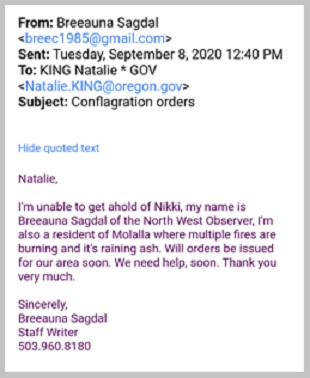
An inquiry made by North West Observer to the Governor's office September 8th, asks when Conflagration Orders might be seen?
The very same day September 8th the White House reached out to Oregon Governor Kate Brown, offering help, services and asking the administration to please notify them as soon as their needs are clear via a "Wildfire Response Request". The email, seen here, was obtained by public records request.
Two days later, on September 10th, Oregon Governor Kate Brown held a press conference, at which time she's asked what resources have been requested from the federal government. Kate Brown replies "of course I've reached out to the White House, I've not had a response back". The next day, the White House follows up with Brown's administration, to address an MSNBC report of an unresponsive Trump Administration, and again offer whatever help might be needed.
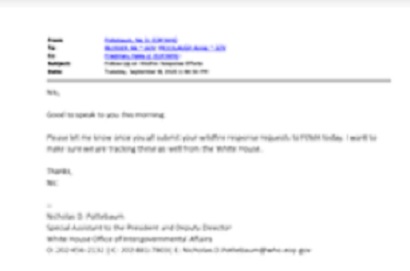
Brown's office, acknowledges the help and support from Trump, offering that "if asked", during her scheduled press conference at 1:00 pm, Brown would clarify the Trump administration and the State were working closely together. Brown's office is quick to fire back with a politically motivated, quid pro quo, stating "Thanks, we're also trying to dispel rumors with the FBI, and Local Law Enforcement assistance, that Antifa set the fires".
Essentially, Brown's aid twisted arms, during an election year, to help quash Antifa rumors, in exchange for honesty...
if asked for.
While politics have clearly played a role in fire response, it appears to have also played a role in the fire's beginning, and quick spread, as well. Tom Sleight, a third generation Molalla farm owner, joined by Nicole West featured here as the "Hillbilly Brigade", sat down with The Northwest Observer, to set the record straight about events witnessed first-hand, on the ground.
Sleight states that he received a call from his brother late Monday night of September 7th. The entire lowlands of Maple Creek, Willhoit, and surrounding areas were ablaze. The Sleight family has learned from years of experience, once Conflagration orders are placed, it can take an additional two to four days before state sanctioned help arrives. At that point in time, Kate Brown had not yet placed Conflagration orders, and both Sleight brothers knew there was no time to waste.
Tom Sleight withdrew approximately twelve thousand dollars from his safe, loaded up his tankers, and began running infrastructure up to the fire line, arriving around 4:30 am. "I just started handing out money to friends and family, telling everyone to go down to harbour freight and buy up all the trash pumps, gasoline, and water tanks they could find", Sleight chuckles.
Nicole West claims it's a deep mistrust of government, years of ineptitude, and failure of one party rule, that essentially saved rural Oregon. "Nobody even stopped to consider what Brown was going to do, we all knew it would be too little too late anyways."
West paints a vivid picture of just how effectively, ineffective our government has become. "It was painfully obvious which area was privately owned land, and which areas are government maintained" says West. Government controlled forestry had a 100 year duff layer in spots, smoldering and lighting roots on fire.
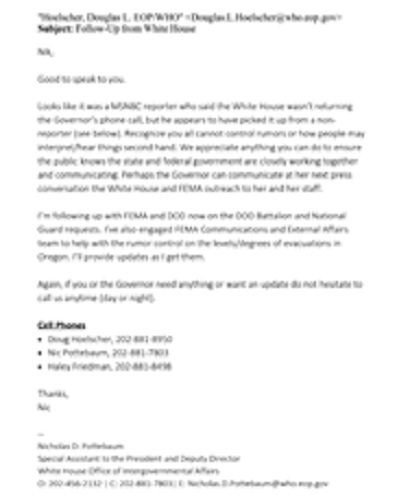
"That debris keeps in heat, and acts like an oven" Sleight stated, "on the other hand, the fires blow right through private land, as it's well cared for, well maintained, limbs cut back, and no fuels to keep it there smoldering."
Since the passing and adaptation of the Coho Salmon petition, and various bills last long session, including the "Wildlife Corridor Bill", sponsored by Portland based environmental groups, many gates have gone up, logging contracts gone unfulfilled, and the day use program for needy families to collect firewood ended, state and federally managed lands have grown unmanageable. Forest management is vital for carbon sequestration.
West believes Kate Brown, and Portland residents are out of touch with reality, "Portland is burning their city down, maybe ours too, but the difference is that we're working hard to save ours". "This isn't about climate change, and even if it was, we're going about it all wrong. Fires put more carbon into the atmosphere than all the cars on the road combined. We need to manage our forests properly, we could have stopped this in opal creek at ten acres, the total loss and devastation will cost far more, than had we properly managed the forest to begin with."
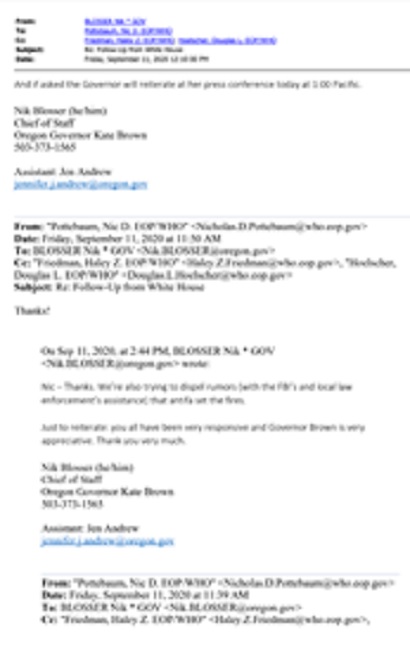
"Had Kate Brown actually compromised on
HB 2020 in 2019, we might have passed a bipartisan forest management bill. Instead of letting voters decide, she pushed lawmakers to walk out, which is all they can do against the democratic super majority" says James Hieb, who is running this election for Canby City Council.
Hieb and his family have also been impacted by the fires, "Many families, farms, businesses, and lives have been lost, unnecessarily to these fires, but mostly to an entrenched status quo that values party politics over human life. It's going to be a rough winter, food prices will go up due to lost local farms, a downed economy is killing jobs. Everything hinges upon this election in November." "National politics receive the lion share of media, but it all boils down to the local level, if a state thrives, or barely survives. Local leaders determine our daily lives, and how we're going to put the pieces back together".
At the time of this report, the White House was not available for comment regarding interactions with the Brown administration. Reports indicate that President Trump had flown in to personally check on residents of the fires, but have not yet been confirmed.
--Breeauna Sagdal| Post Date: 2020-10-12 08:38:09 | Last Update: 2020-10-12 21:26:07 |
Big money, out-of-state interests think so
If you think redistricting is no big deal, think again.
Article 1, Section 2 of the US Constitution calls for a
census every 10 years. Article IV, Section 6 of the
Oregon Constitution requires that the legislature redraw all the Congressional, State Senate and State Representative districts using that data. 2020 is the year in which the census will be taken and the 2021 Oregon Legislature will take on redistricting, which will take effect for the 2022 election.
If the Legislature fails to achieve a redistricting plan, the job falls to the Secretary of State. That will be whomever wins the November election for Secretary of State.
On October 2, Secretary of State Candidate, Shemia Fagan (D-Portland) accepted
a $100,000 contribution from the
National Democratic Redistricting Committee.
You'll remember earlier this year, when Fagan's longtime colleague, fellow Democrat and State Representative Alyssa Keny-Guyer publicly expressed
disappointment in Fagan's campaign including her fundraising.
For an office that is tasked with the fair administration of elections it's not only sad to see an out-of-state organization place such a heavy thumb on the scale, it's also sad to see a candidate -- Shemia Fagan -- running for this office who can't find the integrity to turn down such a donation.
--Staff Reports| Post Date: 2020-10-11 12:47:26 | |
The government tells housing providers how much they can charge.
The Oregon Department of Administrative Services last week published the annual maximum rent increase allowed by statute for calendar year 2021. The DAS Office of Economic Analysis has calculated the maximum percentage as 9.2%.
Following the passage of
SB 608 in the 2019 legislative session, Oregon law requires DAS to calculate and post to its website, by September 30 of each year, the maximum annual rent increase percentage allowed by statute for the following calendar year. Per statute, OEA calculates this amount as 7% plus the
Consumer Price Index for All Urban Consumers, West Region (All Items), as most recently published by the Bureau of Labor Statistics.
The allowable rent increase percentage for the 2021 calendar year is 9.2%. DAS will calculate and post the percentage for the 2022 calendar year by Sept. 30, 2021.
Information about the maximum annual rent increase percentage, as well as the provisions of ORS 90.323 and 90.600 (statutes governing rent increases), can be found on the
OEA website.
--Staff Reports| Post Date: 2020-10-11 08:27:29 | Last Update: 2020-10-11 08:42:05 |
Read More Articles






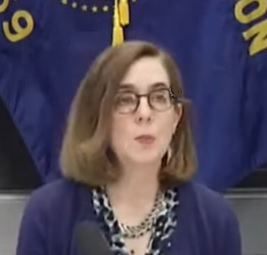

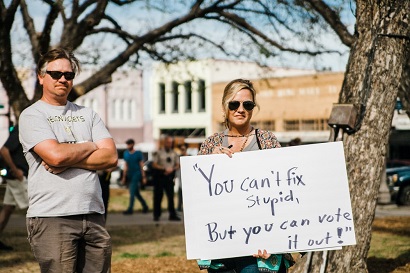



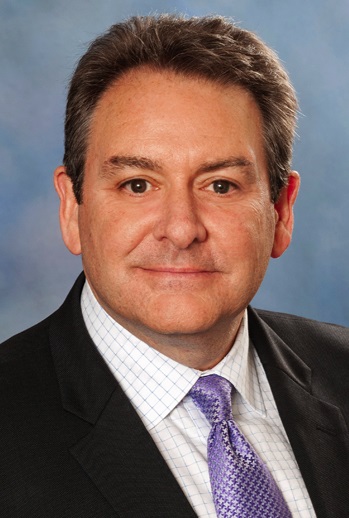



 The legislative branch rules on harassment, including Rule 27, are found in the Legislative Branch Personnel Rules
The Senate Committee on Conduct includes Senator Denyc Boles (R-Salem), Senator Kathleen Taylor (D-Portland), co-chair Senator Chuck Thomsen (R-Hood River) and co-chair Floyd Prozanski (D-Eugene). By rule, the committee is balance with two members from each party.
According to the report,
The legislative branch rules on harassment, including Rule 27, are found in the Legislative Branch Personnel Rules
The Senate Committee on Conduct includes Senator Denyc Boles (R-Salem), Senator Kathleen Taylor (D-Portland), co-chair Senator Chuck Thomsen (R-Hood River) and co-chair Floyd Prozanski (D-Eugene). By rule, the committee is balance with two members from each party.
According to the report,




 "Had Kate Brown actually compromised on HB 2020 in 2019, we might have passed a bipartisan forest management bill. Instead of letting voters decide, she pushed lawmakers to walk out, which is all they can do against the democratic super majority" says James Hieb, who is running this election for Canby City Council.
"Had Kate Brown actually compromised on HB 2020 in 2019, we might have passed a bipartisan forest management bill. Instead of letting voters decide, she pushed lawmakers to walk out, which is all they can do against the democratic super majority" says James Hieb, who is running this election for Canby City Council.

